SEO
How to Play by the Rules
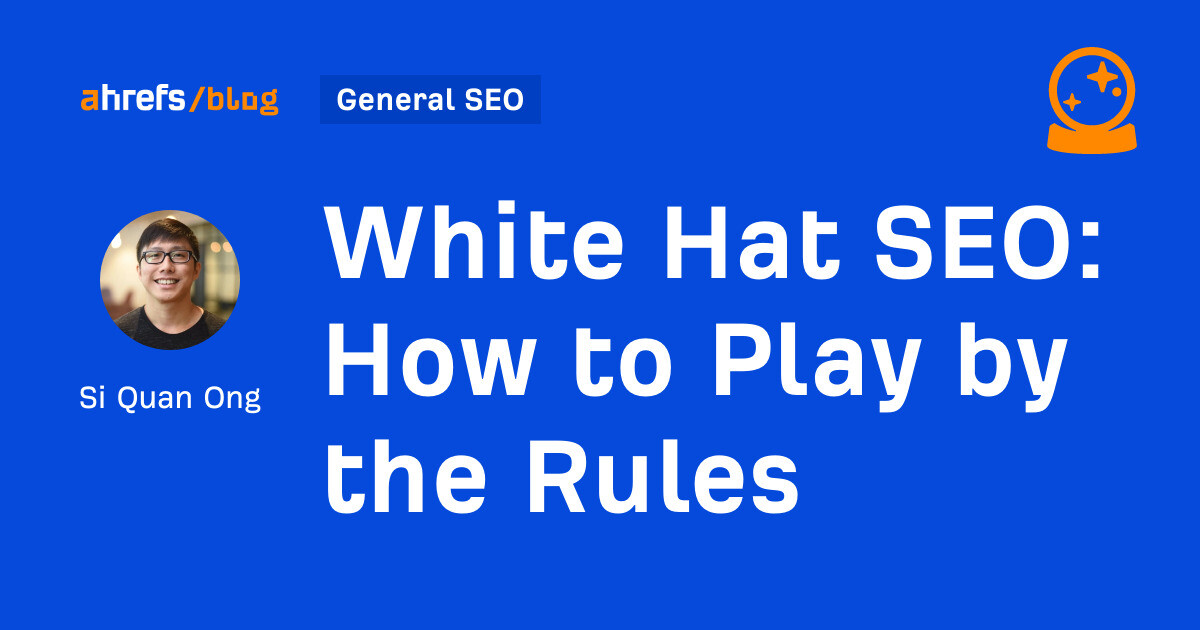
Do you want to rank for competitive terms without worrying about potential Google penalties? Then go white hat.
In this post, you’ll learn what white hat SEO is, how it compares to black hat SEO, and how to implement a few white hat SEO tactics.
White hat SEO refers to the use of SEO strategies, techniques, and tactics that are within Google’s guidelines.
The focus is the user. White hat SEOs prioritize users by providing relevant, high-quality content rather than content designed to “trick” search engines.
The flip side of white hat SEO is black hat SEO.
Black hat SEO refers to the use of strategies, techniques, and tactics that do not necessarily follow Google’s guidelines. Its focus is on finding and exploiting algorithmic loopholes.
Sometimes, these black hat tactics can be plain unethical—we’re talking about SEOs spamming competitors with malicious links, injecting other websites with malicious code, and more.
Sidenote.
The terms “white hat” and “black hat” came about because old films in the Western genre used those hats to symbolize the contrast between good vs. evil. (White hats were worn by heroes and black hats by villains.) This then gave rise to the terms in computer hacking, which followed into SEO. They’re not necessary the best terms. But we’re using it here for now because there is no alternative in popular use.
Here are three reasons:
1. Black hat SEO is risky
Following the law confers no reward. But there are downsides in not following them, such as fines and imprisonment.
The same goes for white hat SEO. Just because you’re following Google’s guidelines doesn’t mean you’re automatically guaranteed higher rankings. And unfortunately, in some niches (for example, payday loans), black hat SEO is the name of the game.
But just like in the real world, not following the “rules” always runs the risk of getting caught. In this case, it’s not law enforcement, but Google.
If Google discovers you’re using black hat tactics, it could penalize you. When that happens, you’ll see traffic like this:
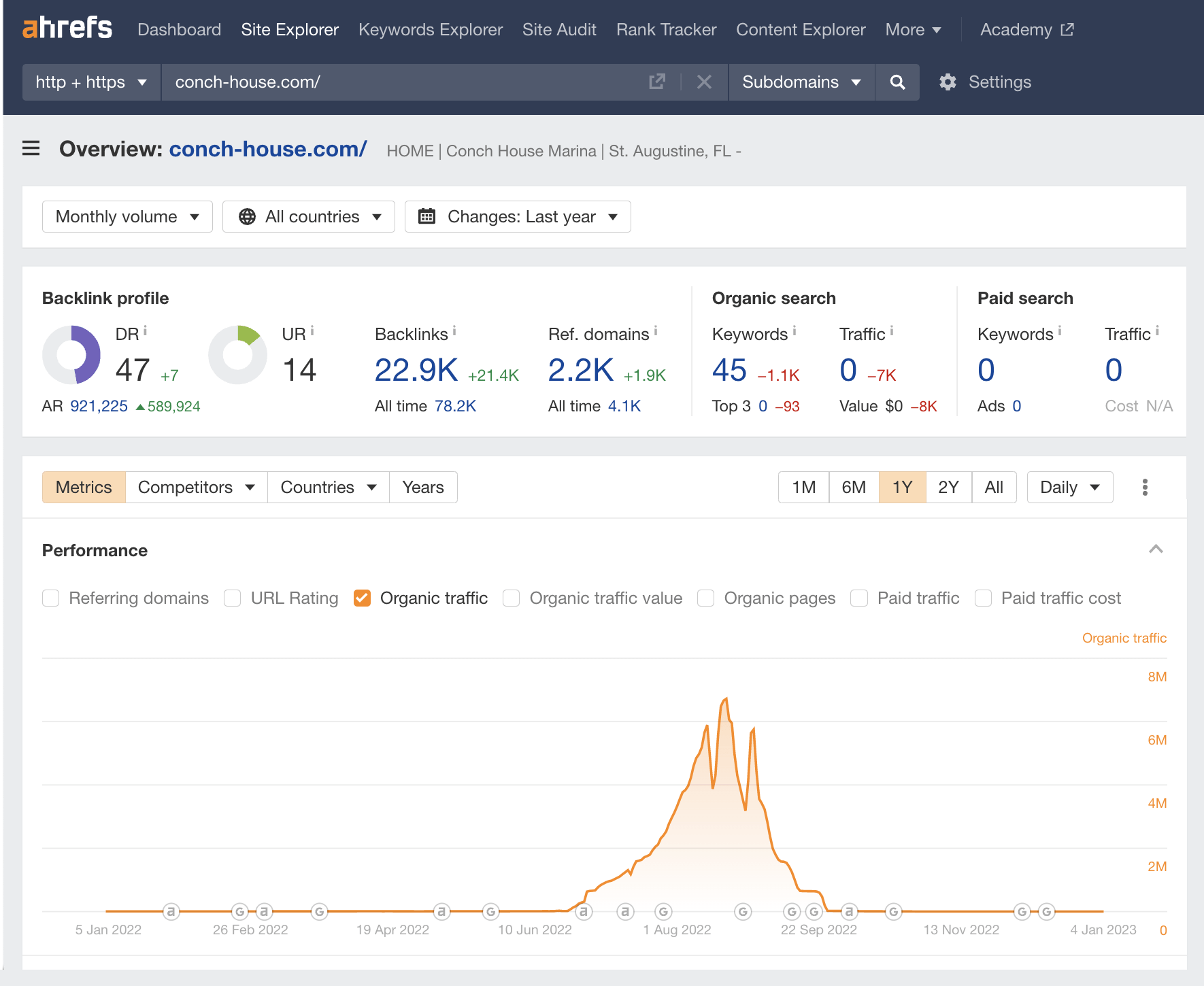
So if your goal is to build a brand for the long term and generate consistent traffic, you’ll have to use white hat SEO tactics.
2. Black hat SEO is difficult to implement
With frequent Google algorithm updates, low-cost spammy tactics, like keyword stuffing, no longer work.
So if you want to go ahead with black hat SEO, you might opt for tactics like building a private blog network (PBN). But building a PBN correctly is expensive (i.e., buying expired domains, dedicated hosting, private Whois, etc.), is technical, has no guarantees of working, and can even cause you to be penalized.
In that case, you may as well invest that money, time, and effort into white hat SEO, which can actually bring long-term traffic and brand value, like our company:

3. Black hat SEO makes everyone’s life worse
Though you’re an SEO, you’re first and foremost a search engine user. You’re probably Googling for things on a daily basis.
So you may win as a black hat SEO if you successfully spammed Google SERPs, but you’ll lose as a user if everything you search for only contains poor and irrelevant results.
So how do you get started with white hat SEO? Here are a few tactics you can use.
1. Do keyword research
One of the key best practices in Google’s Search Essentials is to “use words that people would use to look for your content.”
You can find out what these words are by doing keyword research.
Here’s how to get started:
- Go to Ahrefs’ Keywords Explorer
- Enter one or a few relevant words or phrases
- Go to the Matching terms report

Here, you can see over 4 million potential keywords you could target. If they’re relevant, you want to rank for all of them. But you also likely have limited resources, so you should prioritize.
We can narrow the list down by focusing on two metrics:
- Traffic Potential (TP) – Pages no longer just rank for one keyword. It can rank for many and get traffic from all of them. TP is the sum of organic traffic that the #1 ranking page for your target keyword receives from all the keywords that it ranks for. You’d want this to be high.
- Keyword Difficulty (KD) – There are only so many spaces you can rank for on the first page of Google. As a result, SERPs can be competitive. KD gives an estimation of how hard it is to rank in the top 10 organic search results for a keyword on a 100-point scale. You’d want this to be low.
How high TP and how low KD should be depends on your website. But for this example, let’s set them like so:
You’ll also want to set the Target filter to check if your website is already ranking for any of these keywords.

Look through the list and pick out relevant keywords.
2. Create helpful, reliable, people-first content
Google’s Search Essentials states that we should create helpful, reliable, and people-first content.
But what does that mean in reality? Here are the steps you should take:
Align your content with search intent
Google wants to serve relevant content to its users. And a key aspect of relevance is whether searchers find the search results useful.
In order for search results to be useful, Google needs to figure out why searchers are looking for that query, so it can serve the right results.
This is known as search intent.
If you want to rank high on Google, you need to figure out search intent. We can do this by analyzing the SERPs for the three Cs:
- Content type – Are they blog posts, product pages, landing pages, or something else?
- Content format – Are they tutorials, listicles, how-to guides, recipes, free tools, or something else?
- Content angle – Is there a dominant selling point, like low prices or how easy it is?
For example, let’s say we’re targeting the keyword “how to save money.”

If we analyze the SERPs for the three Cs, here’s what we see:
- Content type – They’re all blog posts.
- Content format – Despite the “how to” modifier, people are actually looking for a list of ways to save money.
- Content angle – There are a few angles here: “proven,” “simple,” “easy,” and more.
If we want to rank for this keyword, we likely have to create a listicle of money-saving tips.
Cover the topic in full
The best result for a query covers everything searchers want to know. So if there are subtopics that the top-ranking pages cover, you’ll want to include them in your content too.
Here’s how to find these subtopics:
- Enter your keyword into Ahrefs’ Keywords Explorer
- Scroll down to the SERP overview
- Select three to five top-ranking articles (make sure they’re similar)
- Click Open in and choose Content gap
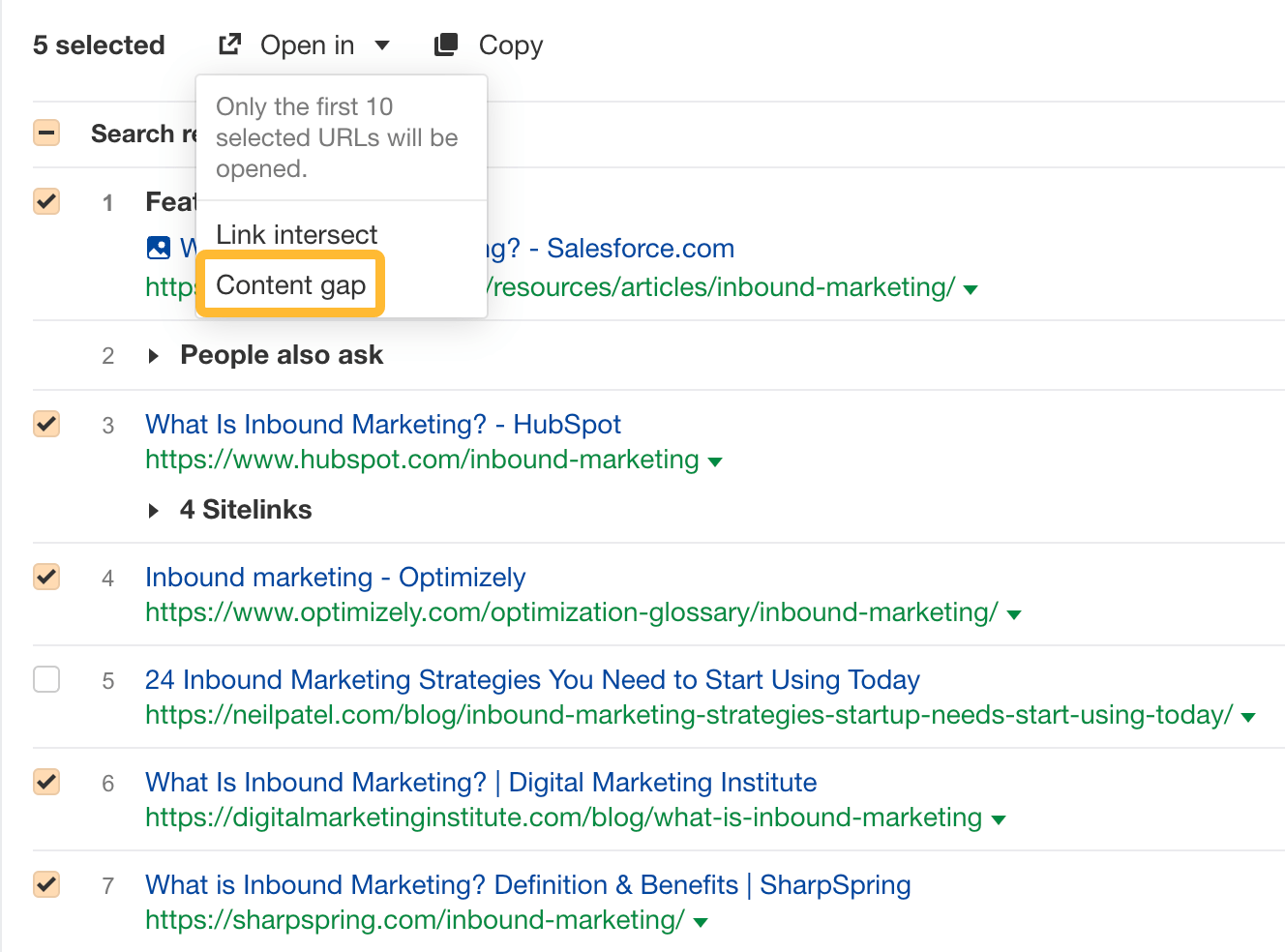
In the Content gap report, click the Intersection dropdown and choose “4, 5” to see only the most relevant subtopics:
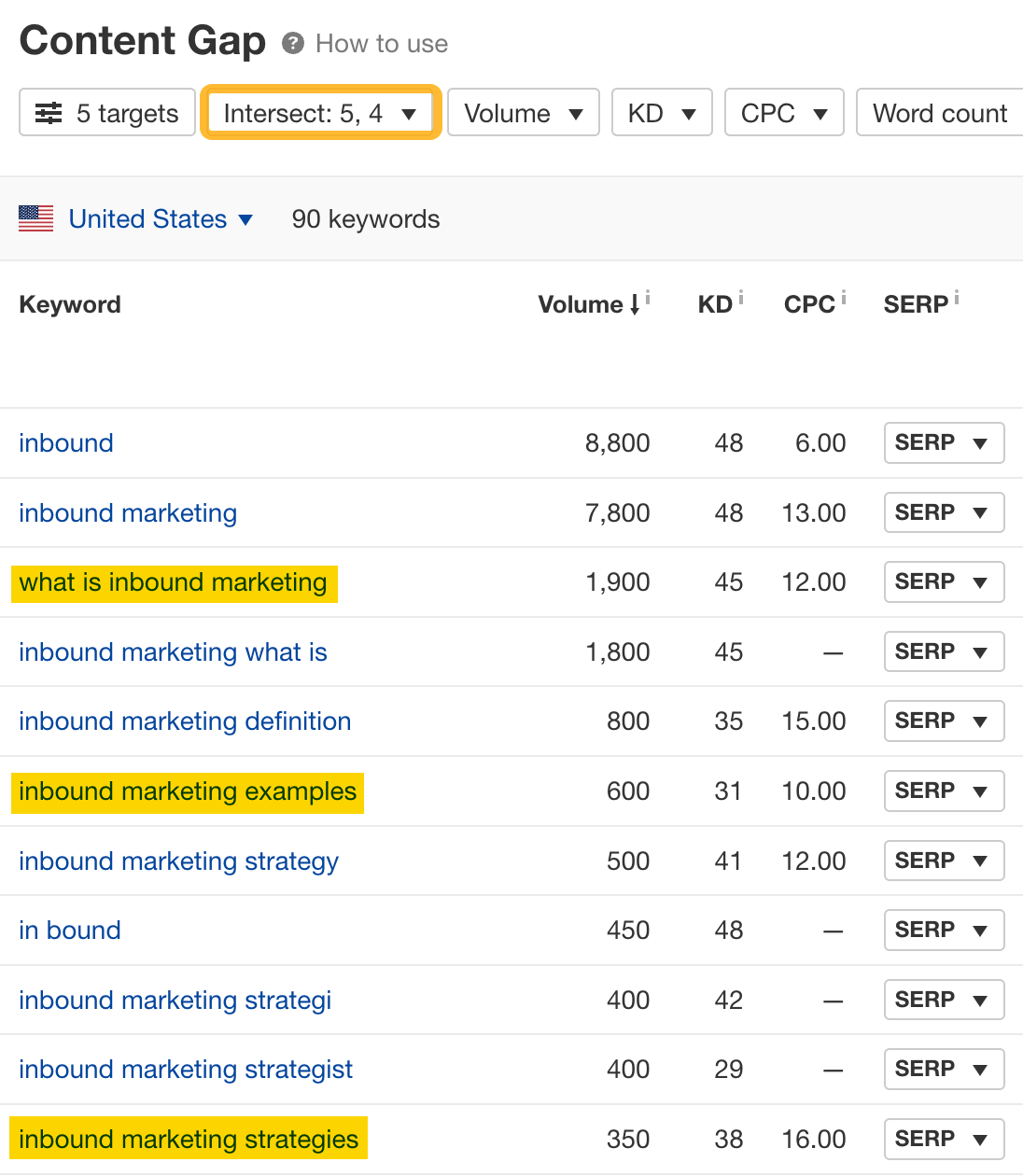
If we’re targeting the keyword “inbound marketing,” these subtopics can make great H2s:
- What is inbound marketing
- Inbound marketing strategies
- Inbound marketing examples
Create something unique and original
Google’s guide on creating helpful content suggests asking these questions:
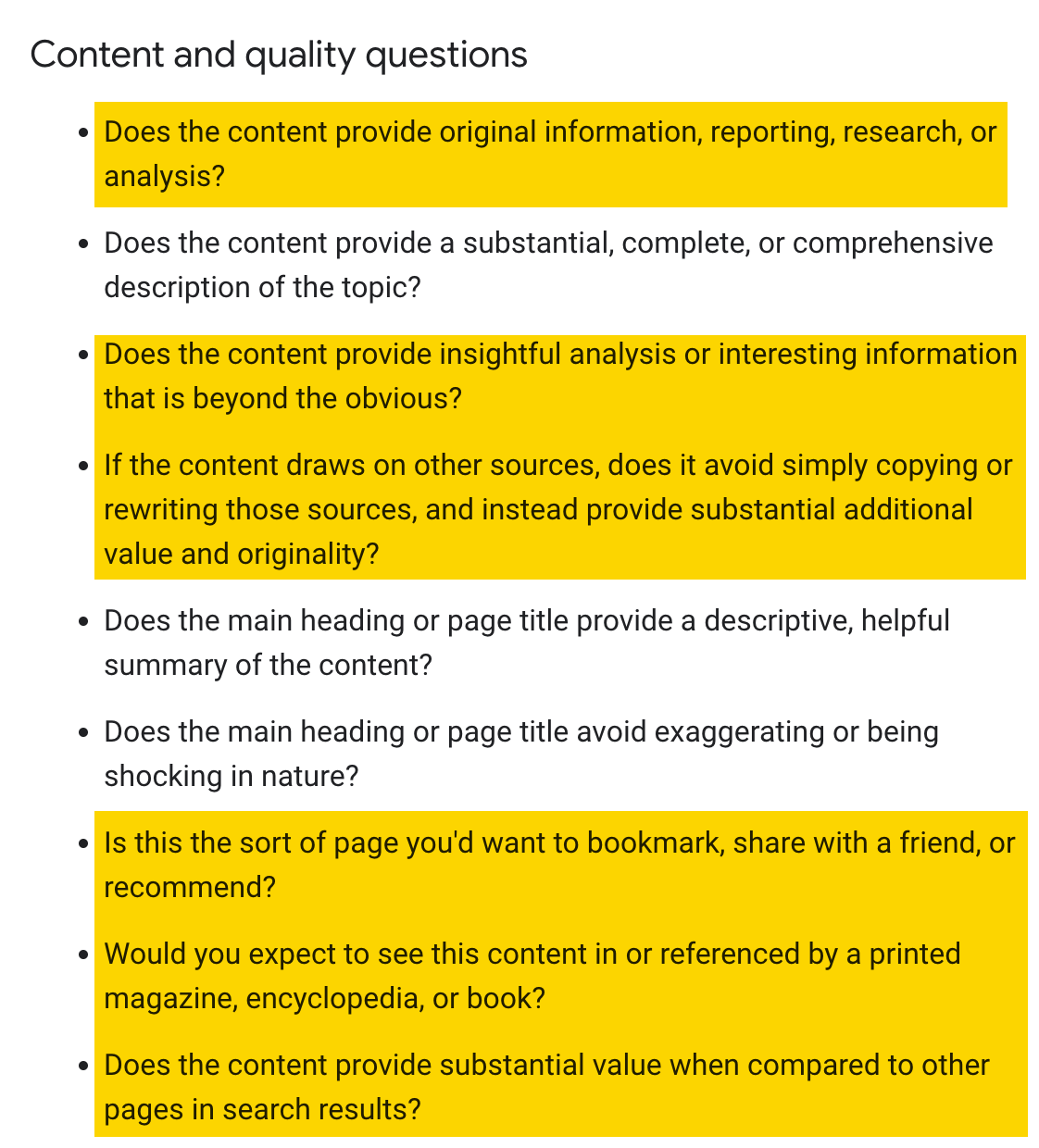
Simply put: Google wants you to create content that’s unique and original.
How do you do that? Here are a few ways you can stand out from the rest:
- Provide original research – Consider running studies, surveys, polls, experiments, or crowdsource/interview experts.
- Give a unique perspective or opinion – This can be from you, industry experts, or someone in your organization.
- Build on what’s already out there – Imagine you’re a scientist contributing to a corpus of knowledge. Help investigate claims, expand on key ideas, or challenge existing consensus.
Ensure content is created or reviewed by someone with expertise and experience
Google also aims to reward content that demonstrates E-E-A-T:
- Experience – Firsthand or life experience in the topic.
- Expertise – High level of knowledge or skill in a particular field.
- Authoritativeness – Reputation, particularly among other experts and influencers in the industry.
- Trustworthiness – Legitimacy, transparency, and accuracy of the website and its content.
It sounds complex, but it’s what you expect good content to be. If you’re reading something, you’ll likely want it to come from someone with firsthand experience or expert knowledge. You don’t want it to be from a writer who has regurgitated what’s ranking.
Demonstrating this can be as simple as actually using a product you’re reviewing. Or having been to Milan if you’re recommending the best places to visit.
For example, most of our content is created by our marketing team, which consists of people with years of experience in the SEO industry. Like my colleague, Chris Haines, who has worked in SEO agencies for 10 years.
If you do not have the required experience or expertise, hire someone who has to create or review your content.
Make sure content is easy to read
Nobody wants to read a chunk of text. Your content should be readable for your users.
I recommend following the ASMR formula:
- Annotations – Use elements like sidenotes and blockquotes to break up the post.
- Short sentences and paragraphs – Split long sentences into shorter ones.
- Multimedia – Include videos, images, and GIFs to eliminate extra words.
- Read your copy out loud – Highlight areas where the content doesn’t flow smoothly.
3. Pay attention to on-page SEO
In Google’s own words:
Use words that people would use to look for your content, and place those words in prominent locations on the page, such as the title and main heading of a page, and other descriptive locations such as alt text and link text.
You’ve done the first part via keyword research. Now, it’s time to make doubly sure that Google can understand your content. To do this, you should:
- Include your target keyword in the title and H1 tag.
- Add concise and accurate alt text to your images.
4. Provide a good user experience
Google wants to reward pages with a good user experience. It explicitly states this in its guide on creating helpful content:
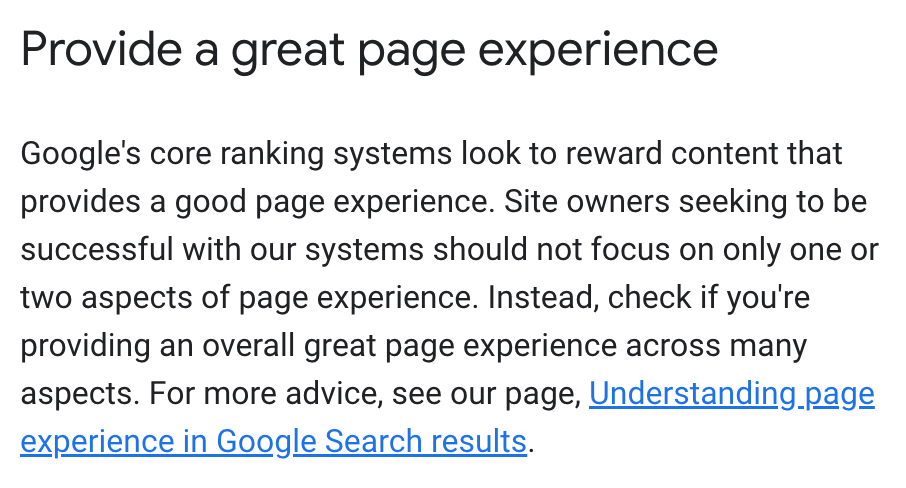
To provide a good user experience, you’ll want to:
- Use HTTPS – Encrypt your site with SSL/TLS and protect your readers’ data.
- Make sure your website is mobile-friendly – Most people search on mobile these days. Your website should work on all devices.
- Ensure your pages load fast – Slow pages are a pain. Use a tool like PageSpeed Insights to check your pages’ performance.
- Avoid intrusive interstitials – Interstitials are full-screen ads that appear before a webpage’s content is loaded. Nobody, including Google, likes them.
- Improve your Core Web Vitals (CWV) – These are speed metrics that are part of Google’s Page Experience signals used to measure user experience. They’re not make-or-break for SEO, but improving them can help with better user experience.
5. Utilize structured data
A major part of SEO is really about helping Google understand the content of your pages. You can provide explicit clues about the meaning of a page for Google by using structured data.
Structured data is a standardized way to provide information about a webpage. It conforms to a particular format, and the universally recognized format is schema markup.
For example, if I wanted to tell search engines my given name is “Si Quan,” I would have to use the givenName property and use it in its exact form in our code.
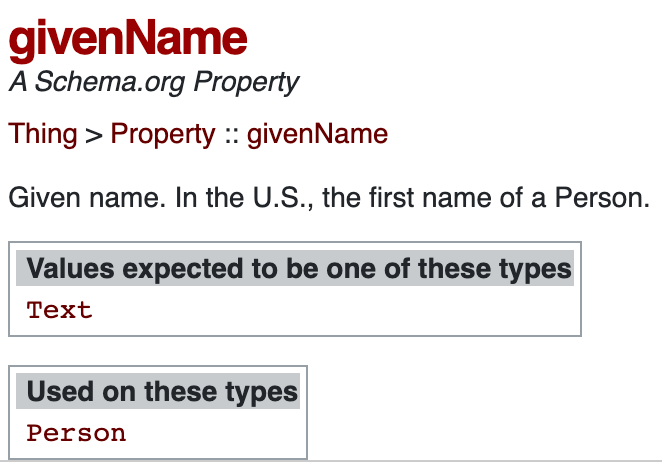
Learn more about how to implement schema markup in our guides below.
6. Build high-quality links
Links are an important Google ranking factor. But buying backlinks is against Google’s guidelines:
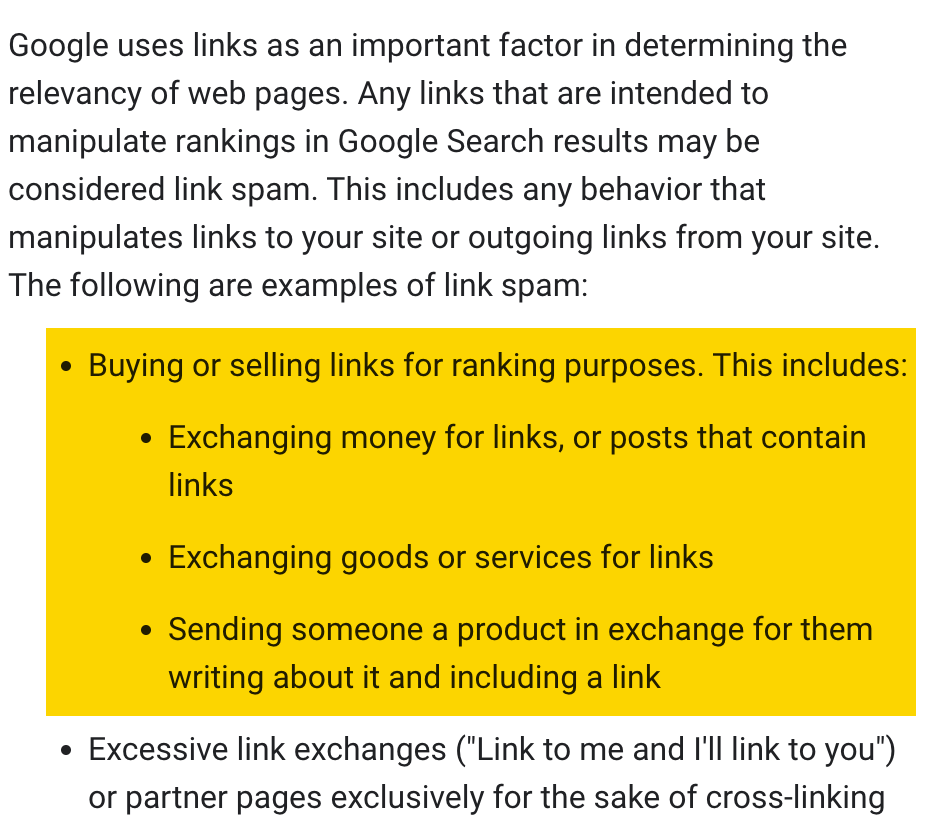
What should you do instead? Here are some ideas on how you can acquire backlinks the white hat way:
Guest blogging
Guest blogging is when you create content for other websites. In the process, you’ll usually be allowed to link back to your website.
Here’s how you can find potential guest blogging opportunities:
- Go to Ahrefs’ Content Explorer
- Set the dropdown to “In title”
- Enter a relevant keyword
- Set these filters:
- Language filter to English (or your target language)
- Live/broken filter to Only live
- Filter explicit results to On
- Domain Rating filter to 30–90
- Website traffic filter to >500
- Check One page per domain
- Check Exclude homepages
- Check Exclude subdomains

Look through the results and pick out relevant sites you could guest write for. Find the right person’s email and pitch them.
Create link bait
There are many pages you’d like links to. These are likely your “money pages,” e.g., product pages and landing pages. But nobody wants to link to them because they barely provide any value (unless they’re recommending your product).
So one way to build links to such pages is to use the Middleman Method:
- Build links to a page that attracts backlinks, i.e., link bait
- Add internal links from the link bait to your important pages

How do you find good link bait ideas? The best way is to piggyback off what’s working for your competitors:
- Go to Ahrefs’ Site Explorer
- Enter your competitor’s domain
- Go to the Best by links report

Look through the list to see what kinds of formats and topics resonate with people in your niche. For example, we can clearly see that studies and statistics are popular in the SEO space:

Use HARO
Help a Reporter Out (HARO) is a free service connecting journalists to sources and sources to journalists. Once you sign up, you’ll receive daily emails with queries from journalists of different publications.

If your response is selected, the publication might link to you.
Learn how to build links using HARO in the guide below.
Final thoughts
White hat SEO is about the right mindset: putting users first, creating useful content, and not spamming people.
Some black hat SEOs may be able to get results in the short term, but white hat SEO is essential for long-term success.
Remember, white hat SEO is a marathon, not a sprint.
Any questions or comments? Let me know on Twitter.
SEO
Measuring Content Impact Across The Customer Journey

Understanding the impact of your content at every touchpoint of the customer journey is essential – but that’s easier said than done. From attracting potential leads to nurturing them into loyal customers, there are many touchpoints to look into.
So how do you identify and take advantage of these opportunities for growth?
Watch this on-demand webinar and learn a comprehensive approach for measuring the value of your content initiatives, so you can optimize resource allocation for maximum impact.
You’ll learn:
- Fresh methods for measuring your content’s impact.
- Fascinating insights using first-touch attribution, and how it differs from the usual last-touch perspective.
- Ways to persuade decision-makers to invest in more content by showcasing its value convincingly.
With Bill Franklin and Oliver Tani of DAC Group, we unravel the nuances of attribution modeling, emphasizing the significance of layering first-touch and last-touch attribution within your measurement strategy.
Check out these insights to help you craft compelling content tailored to each stage, using an approach rooted in first-hand experience to ensure your content resonates.
Whether you’re a seasoned marketer or new to content measurement, this webinar promises valuable insights and actionable tactics to elevate your SEO game and optimize your content initiatives for success.
View the slides below or check out the full webinar for all the details.
SEO
How to Find and Use Competitor Keywords

Competitor keywords are the keywords your rivals rank for in Google’s search results. They may rank organically or pay for Google Ads to rank in the paid results.
Knowing your competitors’ keywords is the easiest form of keyword research. If your competitors rank for or target particular keywords, it might be worth it for you to target them, too.
There is no way to see your competitors’ keywords without a tool like Ahrefs, which has a database of keywords and the sites that rank for them. As far as we know, Ahrefs has the biggest database of these keywords.
How to find all the keywords your competitor ranks for
- Go to Ahrefs’ Site Explorer
- Enter your competitor’s domain
- Go to the Organic keywords report
The report is sorted by traffic to show you the keywords sending your competitor the most visits. For example, Mailchimp gets most of its organic traffic from the keyword “mailchimp.”


Since you’re unlikely to rank for your competitor’s brand, you might want to exclude branded keywords from the report. You can do this by adding a Keyword > Doesn’t contain filter. In this example, we’ll filter out keywords containing “mailchimp” or any potential misspellings:


If you’re a new brand competing with one that’s established, you might also want to look for popular low-difficulty keywords. You can do this by setting the Volume filter to a minimum of 500 and the KD filter to a maximum of 10.


How to find keywords your competitor ranks for, but you don’t
- Go to Competitive Analysis
- Enter your domain in the This target doesn’t rank for section
- Enter your competitor’s domain in the But these competitors do section


Hit “Show keyword opportunities,” and you’ll see all the keywords your competitor ranks for, but you don’t.


You can also add a Volume and KD filter to find popular, low-difficulty keywords in this report.


How to find keywords multiple competitors rank for, but you don’t
- Go to Competitive Analysis
- Enter your domain in the This target doesn’t rank for section
- Enter the domains of multiple competitors in the But these competitors do section


You’ll see all the keywords that at least one of these competitors ranks for, but you don’t.


You can also narrow the list down to keywords that all competitors rank for. Click on the Competitors’ positions filter and choose All 3 competitors:


- Go to Ahrefs’ Site Explorer
- Enter your competitor’s domain
- Go to the Paid keywords report


This report shows you the keywords your competitors are targeting via Google Ads.
Since your competitor is paying for traffic from these keywords, it may indicate that they’re profitable for them—and could be for you, too.
You know what keywords your competitors are ranking for or bidding on. But what do you do with them? There are basically three options.
1. Create pages to target these keywords
You can only rank for keywords if you have content about them. So, the most straightforward thing you can do for competitors’ keywords you want to rank for is to create pages to target them.
However, before you do this, it’s worth clustering your competitor’s keywords by Parent Topic. This will group keywords that mean the same or similar things so you can target them all with one page.
Here’s how to do that:
- Export your competitor’s keywords, either from the Organic Keywords or Content Gap report
- Paste them into Keywords Explorer
- Click the “Clusters by Parent Topic” tab


For example, MailChimp ranks for keywords like “what is digital marketing” and “digital marketing definition.” These and many others get clustered under the Parent Topic of “digital marketing” because people searching for them are all looking for the same thing: a definition of digital marketing. You only need to create one page to potentially rank for all these keywords.


2. Optimize existing content by filling subtopics
You don’t always need to create new content to rank for competitors’ keywords. Sometimes, you can optimize the content you already have to rank for them.
How do you know which keywords you can do this for? Try this:
- Export your competitor’s keywords
- Paste them into Keywords Explorer
- Click the “Clusters by Parent Topic” tab
- Look for Parent Topics you already have content about
For example, if we analyze our competitor, we can see that seven keywords they rank for fall under the Parent Topic of “press release template.”


If we search our site, we see that we already have a page about this topic.


If we click the caret and check the keywords in the cluster, we see keywords like “press release example” and “press release format.”


To rank for the keywords in the cluster, we can probably optimize the page we already have by adding sections about the subtopics of “press release examples” and “press release format.”
3. Target these keywords with Google Ads
Paid keywords are the simplest—look through the report and see if there are any relevant keywords you might want to target, too.
For example, Mailchimp is bidding for the keyword “how to create a newsletter.”


If you’re ConvertKit, you may also want to target this keyword since it’s relevant.
If you decide to target the same keyword via Google Ads, you can hover over the magnifying glass to see the ads your competitor is using.


You can also see the landing page your competitor directs ad traffic to under the URL column.


Learn more
Check out more tutorials on how to do competitor keyword analysis:
SEO
Google Confirms Links Are Not That Important

Google’s Gary Illyes confirmed at a recent search marketing conference that Google needs very few links, adding to the growing body of evidence that publishers need to focus on other factors. Gary tweeted confirmation that he indeed say those words.
Background Of Links For Ranking
Links were discovered in the late 1990’s to be a good signal for search engines to use for validating how authoritative a website is and then Google discovered soon after that anchor text could be used to provide semantic signals about what a webpage was about.
One of the most important research papers was Authoritative Sources in a Hyperlinked Environment by Jon M. Kleinberg, published around 1998 (link to research paper at the end of the article). The main discovery of this research paper is that there is too many web pages and there was no objective way to filter search results for quality in order to rank web pages for a subjective idea of relevance.
The author of the research paper discovered that links could be used as an objective filter for authoritativeness.
Kleinberg wrote:
“To provide effective search methods under these conditions, one needs a way to filter, from among a huge collection of relevant pages, a small set of the most “authoritative” or ‘definitive’ ones.”
This is the most influential research paper on links because it kick-started more research on ways to use links beyond as an authority metric but as a subjective metric for relevance.
Objective is something factual. Subjective is something that’s closer to an opinion. The founders of Google discovered how to use the subjective opinions of the Internet as a relevance metric for what to rank in the search results.
What Larry Page and Sergey Brin discovered and shared in their research paper (The Anatomy of a Large-Scale Hypertextual Web Search Engine – link at end of this article) was that it was possible to harness the power of anchor text to determine the subjective opinion of relevance from actual humans. It was essentially crowdsourcing the opinions of millions of website expressed through the link structure between each webpage.
What Did Gary Illyes Say About Links In 2024?
At a recent search conference in Bulgaria, Google’s Gary Illyes made a comment about how Google doesn’t really need that many links and how Google has made links less important.
Patrick Stox tweeted about what he heard at the search conference:
” ‘We need very few links to rank pages… Over the years we’ve made links less important.’ @methode #serpconf2024″
Google’s Gary Illyes tweeted a confirmation of that statement:
“I shouldn’t have said that… I definitely shouldn’t have said that”
Why Links Matter Less
The initial state of anchor text when Google first used links for ranking purposes was absolutely non-spammy, which is why it was so useful. Hyperlinks were primarily used as a way to send traffic from one website to another website.
But by 2004 or 2005 Google was using statistical analysis to detect manipulated links, then around 2004 “powered-by” links in website footers stopped passing anchor text value, and by 2006 links close to the words “advertising” stopped passing link value, links from directories stopped passing ranking value and by 2012 Google deployed a massive link algorithm called Penguin that destroyed the rankings of likely millions of websites, many of which were using guest posting.
The link signal eventually became so bad that Google decided in 2019 to selectively use nofollow links for ranking purposes. Google’s Gary Illyes confirmed that the change to nofollow was made because of the link signal.
Google Explicitly Confirms That Links Matter Less
In 2023 Google’s Gary Illyes shared at a PubCon Austin that links were not even in the top 3 of ranking factors. Then in March 2024, coinciding with the March 2024 Core Algorithm Update, Google updated their spam policies documentation to downplay the importance of links for ranking purposes.
The documentation previously said:
“Google uses links as an important factor in determining the relevancy of web pages.”
The update to the documentation that mentioned links was updated to remove the word important.
Links are not just listed as just another factor:
“Google uses links as a factor in determining the relevancy of web pages.”
At the beginning of April Google’s John Mueller advised that there are more useful SEO activities to engage on than links.
Mueller explained:
“There are more important things for websites nowadays, and over-focusing on links will often result in you wasting your time doing things that don’t make your website better overall”
Finally, Gary Illyes explicitly said that Google needs very few links to rank webpages and confirmed it.
I shouldn’t have said that… I definitely shouldn’t have said that
— Gary 鯨理/경리 Illyes (so official, trust me) (@methode) April 19, 2024
Why Google Doesn’t Need Links
The reason why Google doesn’t need many links is likely because of the extent of AI and natural language undertanding that Google uses in their algorithms. Google must be highly confident in its algorithm to be able to explicitly say that they don’t need it.
Way back when Google implemented the nofollow into the algorithm there were many link builders who sold comment spam links who continued to lie that comment spam still worked. As someone who started link building at the very beginning of modern SEO (I was the moderator of the link building forum at the #1 SEO forum of that time), I can say with confidence that links have stopped playing much of a role in rankings beginning several years ago, which is why I stopped about five or six years ago.
Read the research papers
Authoritative Sources in a Hyperlinked Environment – Jon M. Kleinberg (PDF)
The Anatomy of a Large-Scale Hypertextual Web Search Engine
Featured Image by Shutterstock/RYO Alexandre
-

 PPC4 days ago
PPC4 days ago19 Best SEO Tools in 2024 (For Every Use Case)
-
SEARCHENGINES7 days ago
Daily Search Forum Recap: April 16, 2024
-

 SEO7 days ago
SEO7 days agoGoogle Clarifies Vacation Rental Structured Data
-

 MARKETING6 days ago
MARKETING6 days agoStreamlining Processes for Increased Efficiency and Results
-
SEARCHENGINES6 days ago
Daily Search Forum Recap: April 17, 2024
-

 SEO6 days ago
SEO6 days agoAn In-Depth Guide And Best Practices For Mobile SEO
-

 PPC6 days ago
PPC6 days ago97 Marvelous May Content Ideas for Blog Posts, Videos, & More
-

 MARKETING5 days ago
MARKETING5 days agoEcommerce evolution: Blurring the lines between B2B and B2C













